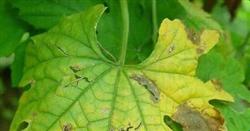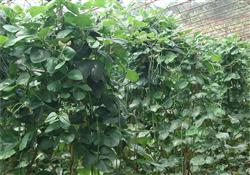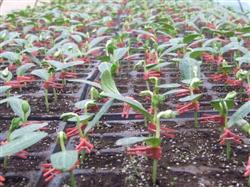Seize the time to control eggplant, melon and balsam pear diseases

Recently, when the technicians of Yong'an Plant Protection Station went to the countryside to investigate vegetable diseases and insect pests, they found that the muskmelon, balsam pear and eggplant transplanted by plastic film and arch shed cultivation at the end of February all had diseases to varying degrees. Eggplant diseases are mainly late blight, and the rate of diseased leaves is as high as 4.1%; muskmelon and balsam pear diseases are mainly blight or Fusarium wilt and blight. In the fields with heavy disease, the mortality rate of blight or Fusarium wilt was 5.8%, the mortality rate of balsam pear blight was 16.2%, and the rate of diseased leaves was as high as 9.2%. In order to prevent the spread and harm of the disease, it is suggested that the agricultural technicians in the township streets should go deep into the field investigation and actively guide the prevention and control of farmers. Suggested prevention and control measures are as follows: 1. Eggplant, muskmelon and balsam pear blight: when the weather clears up, immediately add foliar fertilizer with 800 times liquid of plague cream or 64% disinfectant alum 600 times liquid; unoccurred fields can be sprayed with 75% chlorothalonil wettable powder 600-800 times liquid plus foliar fertilizer, and it is best to spray twice, alternately, once every 7 days. 2. Muskmelon, balsam pear blight or Fusarium wilt: when the weather clears up, immediately use 50% carbendazim or dimethazone 600x solution to add 4500 times or 8000 times solution to irrigate the roots or 1200 times methyl phosphos EC plus 4500 times or 8000 times solution and other plant growth regulators to irrigate the roots, once every 5 days, twice in a row.
- Prev

Analysis on the causes of excessive growth of beans in greenhouse and its control countermeasures
The reasons for overgrowth of oversummer vegetables in different periods are different. Practice has proved that soybeans in greenhouse are most likely to cause overgrowth in summer. The main reasons can be classified into two categories: first, the temperature of seedlings caused by overgrowth at seedling stage is too high, especially at night, especially when the respiratory consumption is too high.
- Next

Pollution-free and efficient cultivation techniques of balsam pear in greenhouse
1. Grafting seedling cultivation 1. Seedling raising method rootstock uses nutrition bowl to raise seedlings and scion uses pure soil to raise seedlings to strictly prevent the infection of soil-borne diseases. Momordica charantia seeds were soaked in 800-fold 75% methyl topiramate solution for 12 hours, then soaked in clean water for 16 hours to dry, buried in sand for 2 days, and sterilized with pentachloronitrobenzene.
Related
- Where is it suitable to grow horseradish in China? it is expected to see the middle altitude horseradish in Alishan.
- How to prevent tomato virus disease reasonably? (Control methods included)
- Many people like to plant towel gourd on the balcony. What are the main points of this method and management?
- What crops can chili peppers be mixed with?
- Fertilization techniques and matters needing attention in Tomato
- What are the grafting techniques for peach seedlings in spring?
- Harm and control methods of root swelling disease of Chinese cabbage
- What are the pests of sweet potatoes? How to prevent and cure it?
- Symptoms, causes and Control methods of navel Rot in Tomato
- The cause of "Cucumber rotten bibcock" in Farmers' planting Cucumber and its Control Plan

